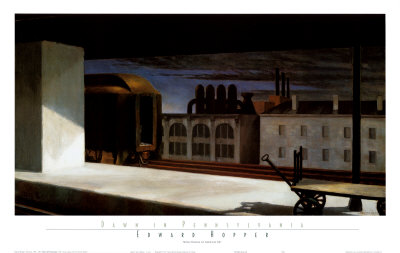Embracing the Concept of the 'Full' Painting
Hopper firmly believed that abstract art had lost much of its greatness due to the fact that it took an oblique approach towards dealing with the relationship between nature and mankind.
This might be why the image of an antiquated cart can be seen in the lower right-hand corner of the painting. Is this a representation of an existence embracing the old and the new? Regardless of subjective interpretation, Dawn in Pennsylvania is an iconic and mesmerising piece.
Edward Hopper was one of the most recognised and prolific realist American painters. Although his most famous piece (arguably) is Nighthawks (1942), this artist produced countless other works worth recognition.
One painting can be seen to personify his view of American society as well as his ability to embrace rather stoic and even fatalistic traits. Dawn in Pennsylvania (1942) is quite interesting in this respect, for its title seems to contradict the images that Hopper presents to the viewer.
Unlike some other painters of his time, Hopper was not an idealist. On the contrary, he espoused the notion that vulnerability and a decidedly melancholic flavour must be recognised. This is undoubtedly reflected within Dawn in Pennsylvania; one of his more dramatic pieces.
It is intriguing to note that this work appears to be the direct antithesis of dawn. Colours such as dark blues, greys, blacks and pale whites seem to dominate the landscape.
The sky is filled with soot which apparently has been bellowing out of the factories in the background. Taking the perspective of a visitor standing upon a train platform, there is nonetheless a hint of transience in this piece.
This can be further noted through the golden tones reflected by a nearby rail car. Might this indicate that hope is still alive even when in the midst of industrial degradation?




